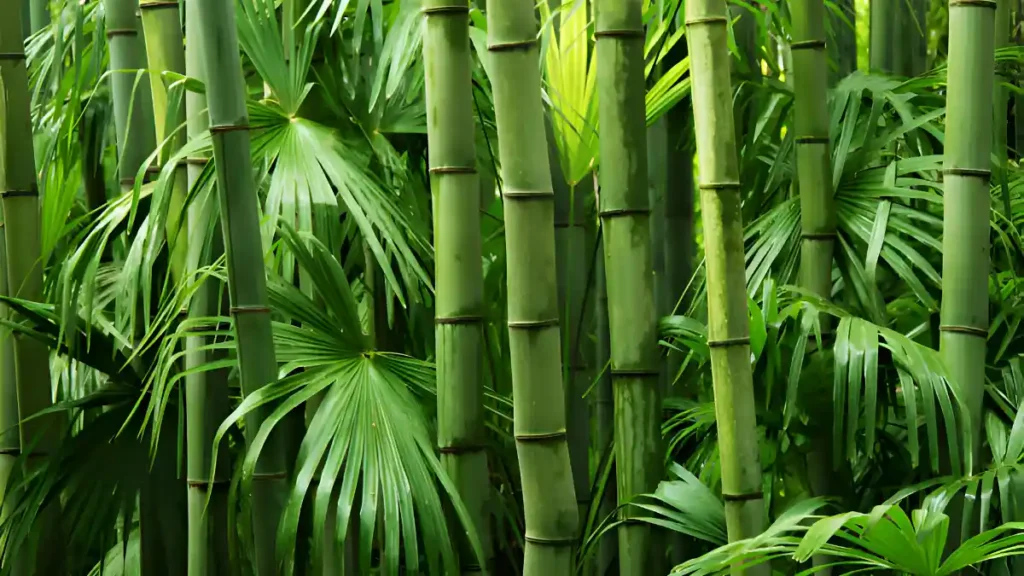Bamboo, often known as “the wonder plant” or the “green gold,” is a flexible addition to any garden or landscape in addition to being a symbol of tropical settings. Bamboo comes in more than 1,500 varieties and is suited for a variety of climates and environments due to its wide diversity of sizes, colors, and growth behaviors. Growing bamboo may be a rewarding experience, whether you want to use the plants as privacy screens or windbreaks, or to add a touch of exotic beauty to your environment. However, understanding the fundamentals of bamboo growing is critical for success.
Here’s a basic guide on how to grow bamboo plant:
- Bamboo comes in a wide variety of species, each with unique growing requirements and habits. Select a kind that works for your climate and available space. Clumping and flowing bamboo are two prevalent varieties.
- Bamboo grows well in both full and partial shade. Be sure the spot you select has enough room for the bamboo to spread out and well-drained soil, especially if you’re planting running bamboo, which can be highly invasive.
- To increase fertility and drainage, treat the soil before planting with organic materials such as compost. Bamboo values a slightly acidic soil pH over a neutral one.
- Create a hole that is twice as big and deep as the root ball of the bamboo. Make sure the top of the root ball of the bamboo is level with the surrounding dirt before inserting it into the hole. Using a careful touch, compact the earth around the plant as you fill up the hole.
How to care for bamboo plant:
- Give recently planted bamboo plenty of water to help it form roots. After that, bamboo usually has to be watered often, especially in the dry months. But be careful not to overwater; bamboo dislikes sitting in soggy soil.
- Cover the bamboo plant’s base with an organic mulch layer to help with moisture retention, weed control, and soil temperature regulation. As mulch decomposes, it also enriches the soil with nutrients.
- Since bamboo overgrows, it can benefit from frequent fertilizing. As directed by the manufacturer, apply a balanced fertilizer once in the early spring and once more in the middle of summer.
- Remove any disease-causing, dead, or crowded stems to allow for better airflow. Additionally, pruning can aid in halting the spread of flowing bamboo.
- Look out for symptoms of diseases like bamboo blight or root rot, as well as pests like aphids, mealybugs, or spider mites. Please address any problems as soon as possible to stop them from getting worse.
Conclusion:
Raising bamboo plants can be a gratifying task due to their adaptability, resilience, and aesthetic appeal. Bamboo can grow in a variety of climates and soil types with the right care and upkeep, making it appropriate for both indoor and outdoor environments. In general, growing bamboo plants may be a wonderful addition to any garden or landscape because they offer not only useful advantages but also aesthetic and environmental benefits.
Certainly! If you’d like to learn more, please consider following our WhatsApp Channel: Harvest Gardening
A frequently asked questions:
Q1: When is the best time for growing bamboo?
A1: Warm climates allow for the year-round planting of bamboo. The ideal time to plant in colder climates is in the spring or early summer when the bamboo can establish itself before winter.
Q2: What is the ideal temperature for the indoor bamboo plant?
A2: Temperatures between 65°F and 90°F (18°C and 32°C) are ideal for bamboo growth. It has to be shielded from drafts and abrupt temperature swings.
Q3: What is Lucky Bamboo plant?
A3: The plant known as Lucky Bamboo (Dracaena sanderiana) belongs to the Dracaena genus and is not technically bamboo. It is a well-liked houseplant that is resilient, requires little maintenance, and is symbolic of wealth and good fortune in many Asian cultures.

